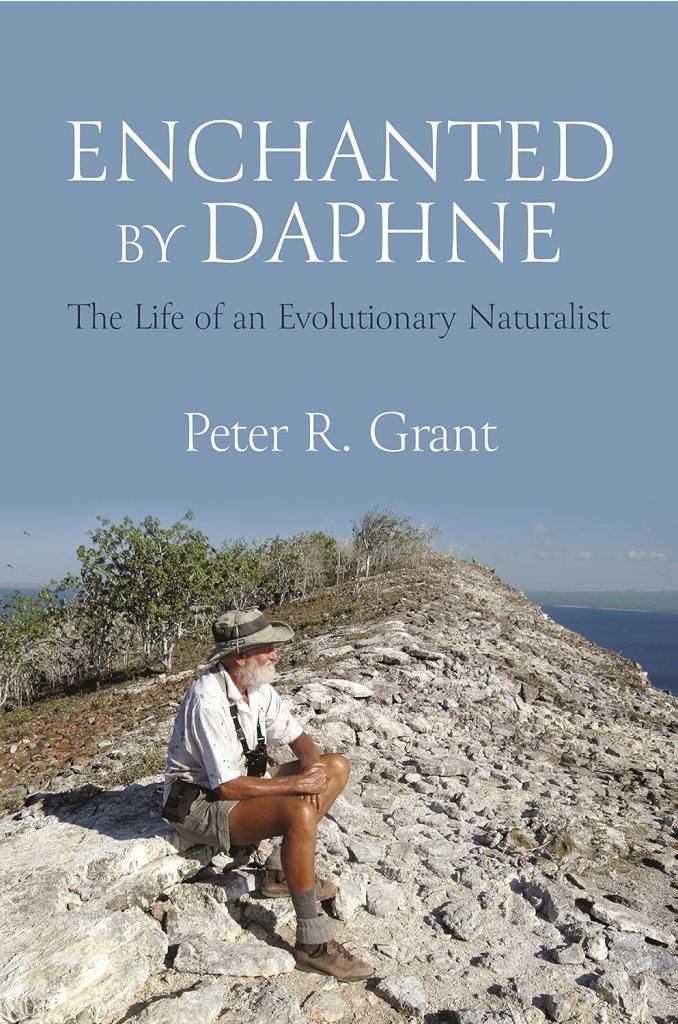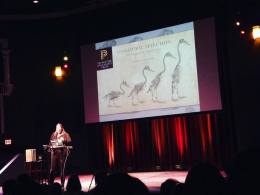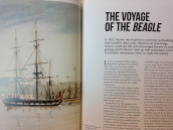This is a great time of the year to gift science books to family and friends, or even yourself – axial tilt is the reason for the season, after all. Here are some recent books about Darwin, evolution, and related topics:
FOR YOUNGER READERS

Darcy Pattison, Pollen: Darwin’s 130 Year Prediction (Little Rock, AR: Mims House, 2019, 33 pp.; illustrated by Peter Willis) ~ This award-winning book looks at a very specific aspect of Darwin’s work: his predicting that a type of moth would be found that would be adapted to pollinating a specific orchid flower. The year is 1862, and Darwin receives a package with a specimen of a star orchid from Madagascar, with a 11.5 inch nectary. He predicts that a species of moth with a very long proboscis (a flexible, elongated part of an insect’s mouth) must exist in Madagascar that can pollinate such a flower. Darwin knew of no such species, and his fellow naturalist Alfred Russel Wallace thought about this problem too. Darwin died without such a species being found, but in 1903 a new species of hawk moth from Madagascar was described that indeed had such a proboscis. While many considered this moth and the star orchid to be a great match, still no one had witnessed the act of pollination between the two. Not until 1992, at least, when the German entomologist Lutz Thilo Wasserthal set up a camera in a tent where he placed some of these orchids, and while the moth is rare he was able to capture a photo of this species pollinating the star orchid. And thus, Darwin’s prediction 130 years before was shown as correct. This book does a great job in telling a scientific mystery story and introducing various biological concepts. The publisher also has children’s books about the physicist Michael Faraday, the physicist Ernst Chladni, and on how a 1919 eclipse tested Einstein’s theory of general relativity. Order Pollen: Darwin’s 130 Year Prediction: Publisher, Amazon, Powell’s, Barnes & Noble, Indiebound (for those wishing to learn more about this topic, check out these three articles: 1/2/3).
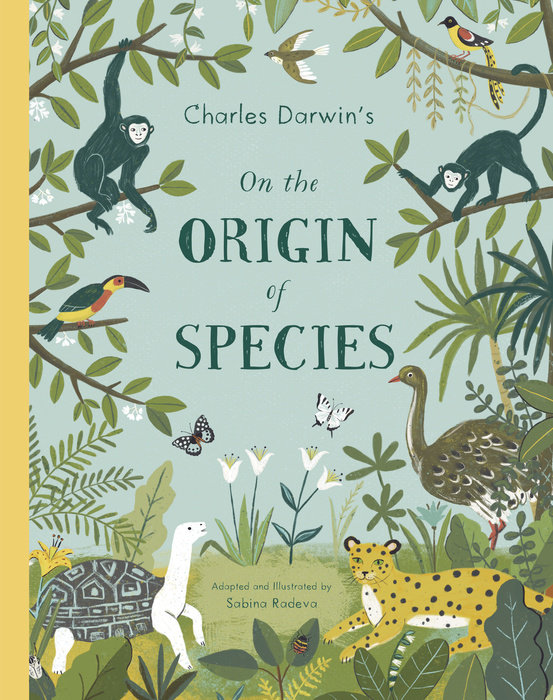
Charles Darwin’s On the Origin of Species adapted and illustrated by Sabina Radeva (New York: Penguin/Crown Books for Young Readers, 2019, 64 pp.; see some images here) This is a beautiful adaptation of Origin for elementary-aged children. The author, a graphic designer with a background in biology, begins by sharing a Biblical view of creation via illustration (without mention of the Bible or Christianity), followed by a brief overview of Buffon’s and Lamarck’s thoughts. Then comes Darwin, the Beagle voyage, and his return home to England and his long, hard work on his theory until he publishes Origin. The focus then turns from Darwin’s life to the theory itself: variation in nature is covered before discussing artificial selection, then the struggle for existence before introducing natural selection. The Tree of Life concept comes next, followed by discussions of the difficulties that Darwin anticipated about his theory and tackled in his book: the imperfection of the geological record, organs of extreme perfection, instinct, migration (geographical distribution), and the mutual affinities of organic beings. The book largely follows the organization of Origin, and toward the end the author shares a quote from Darwin – “In the distant future I see open fields for far more important research… Light will be thrown on the origin of man and his history” – next to an image of the familiar, but unfortunately erroneous, depiction of the evolution of man from apes as a linear process ending in Darwin himself (this type of illustration is known as the “March of Progress”). While I adore the rest of this book, I am bummed that this depiction of evolution crept in – it remains pervasive in people’s understanding of the subject. That said, the whole of the book is splendid, richly illustrated and peppered with many quotes from Origin, and includes much more information in an author’s note, a list of misconceptions about evolution, and an appendix bringing recent ideas in biology to bear on Darwin’s theory. Radeva has done a fine job of making Darwin’s theory comprehensible for younger readers. Order Charles Darwin’s On the Origin of Species: Publisher, Amazon, Powell’s, Barnes & Noble, Indiebound (Richard at The Friends of Charles Darwin also shared about this book, the UK version).

Blake Edgar, Smithsonian Dinosaurs and Other Amazing Creatures from Deep Time (New York: Penguin/Smithsonian Books, 2019, 64 pp.) ~ Earlier in 2019, the Smithsonian National Museum of Natural History in Washington, DC reopened its long-awaited renovation of their fossil halls, called Deep Time. My spouse and son were fortunate to spend some time there recently on a quick DC trip over Thanksgiving break (I shared a short video my son took on Twitter). This is a companion book to the exhibit, and includes breathtaking artwork from paleoartist Julius Csotonyi (his paintings serve as murals throughout the exhibit). The publisher describes the book as “present[ing] some of Earth’s strangest and most unusual creatures from as early as 3.8 billion years ago. Beginning with the first evidence of life, it moves through periods of biodiversity and mass extinction and into a look at the first dinosaurs, mammals, pterosaurs, and other fauna and flora from the Archean to the Quarternary eras. It offers a rare look at some of the world’s most fascinating creatures from sauropods, the largest creatures to ever walk the land, to the top carnivorous predator Tyrannosaurus rex, as well as the mastodons, saber-toothed cats, dire wolves, walrus-whales, and other beasts that seem outlandish to us now.” This is a book that children and adults can both enjoy. Order Smithsonian Dinosaurs and Other Amazing Creatures from Deep Time: Publisher, Amazon, Powell’s, Barnes & Noble, Indiebound.
FOR OLDER READERS

Bill Jenkins, Evolution Before Darwin: Theories of the Transmutation of Species in Edinburgh (New York: Edinburgh University Press, 2019, 232pp.) ~ Publisher’s description: “This book is the first major study of what was probably the most important centre of pre-Darwinian evolutionary thought in the British Isles. It sheds new light on the genesis and development of one of the most important scientific theories in the history of western thought. It was long believed that evolutionary theories received an almost universally cold reception in British natural history circles in the first half of the nineteenth century. However, a relatively recently serious doubt has been cast on this assumption. This book shows that Edinburgh in the late 1820s and early 1830s was witness to a ferment of radical new ideas on the natural world, including speculation on the origin and evolution of life, at just the time when Charles Darwin was a student in the city. Those who were students in Edinburgh at the time could have hardly avoided coming into contact with these new ideas.” Order Evolution Before Darwin: Publisher, Amazon, Powell’s, Barnes & Noble, Indiebound.

Charles Darwin, On the Origin of Species (London: Natural History Museum, 2019, 520 pp.) ~ This is a small, and handsome facsimile edition of the second edition of Origin from 1860, with a green cover mimicking that of the original first edition from 1859 (the title page bears a stamp stating “British Museum Natural History”, so I assume this is taken from the Natural History Museum’s own collection). Darwin’s single diagram of a tree of life is included as the book’s endpapers, and while the text is that of the second, the “Historical Sketch” from the third edition is included. From the short introduction: “Reproduced here is the second edition… which is essentially the same as the first edition, with a few minor corrections, and so reflects Darwin’s original thoughts before the additional evidence and reviews emerged” (anyone wishing to learn in great detail the difference between the different editions of Origin and their publication histories should head here). While there are many current editions of Darwin’s Origin one could have on their shelf, this affordable and highly-pleasing edition would be a great way to go. Order On the Origin of Species: Publisher, Amazon, Powell’s, Barnes & Noble, Indiebound.

Ricardo Rozzi, Kurt Heidinger, and Francisca Massardo, Tracing Darwin’s Path in Cape Horn (Denton/Punta Arenas, Chile: University of North Texas Press/ Universidad de Magallanes, 2018, 288 pp.) ~ This is quite the book for any serious Darwin aficionado or armchair – or actual – traveler/naturalist. From the publisher: “Charles Darwin spent the majority of his 1831-1836 voyage around the world in southern South America, and his early experiences in the Cape Horn region seem to have triggered his first ideas on human evolution. Darwin was not only a field naturalist, but also a scholar of the observations of the European explorers who preceded him. This book illuminates the foundations of Cape Horn’s natural history that oriented Darwin’s own explorations and his ideas on evolution, which acquire the highest relevance for planetary sustainability and environmental ethics. Richly illustrated with maps and color photographs, this book offers a guide to the sites visited by Darwin, and a compass for present-day visitors who can follow Darwin’s path over the sea and land that today are protected by the UNESCO Cape Horn Biosphere Reserve.” Order Tracing Darwin’s Path in Cape Horn: Publisher, Amazon, Powell’s, Barnes & Noble, Indiebound.

Susannah Gibson, The Spirit of Inquiry: How One Extraordinary Society Shaped Modern Science (Oxford: Oxford University Press, 2019, 400 pp.) ~ From the publisher: “Cambridge is now world-famous as a centre of science, but it wasn’t always so. Before the nineteenth century, the sciences were of little importance in the University of Cambridge. But that began to change in 1819 when two young Cambridge fellows took a geological fieldtrip to the Isle of Wight. Adam Sedgwick and John Stevens Henslow spent their days there exploring, unearthing dazzling fossils, dreaming up elaborate theories about the formation of the earth, and bemoaning the lack of serious science in their ancient university. As they threw themselves into the exciting new science of geology – conjuring millions of years of history from the evidence they found in the island’s rocks – they also began to dream of a new scientific society for Cambridge. This society would bring together like-minded young men who wished to learn of the latest science from overseas, and would encourage original research in Cambridge. It would be, they wrote, a society “to keep alive the spirit of inquiry”. Their vision was realised when they founded the Cambridge Philosophical Society later that same year. Its founders could not have imagined the impact the Cambridge Philosophical Society would have: it was responsible for the first publication of Charles Darwin’s scientific writings, and hosted some of the most heated debates about evolutionary theory in the nineteenth century; it saw the first announcement of x-ray diffraction by a young Lawrence Bragg – a technique that would revolutionise the physical, chemical and life sciences; it published the first paper by C.T.R. Wilson on his cloud chamber – a device that opened up a previously-unimaginable world of sub-atomic particles. 200 years on from the Society’s foundation, this book reflects on the achievements of Sedgwick, Henslow, their peers, and their successors. Susannah Gibson explains how Cambridge moved from what Sedgwick saw as a “death-like stagnation” (really little more than a provincial training school for Church of England clergy) to being a world-leader in the sciences. And she shows how science, once a peripheral activity undertaken for interest by a small number of wealthy gentlemen, has transformed into an enormously well-funded activity that can affect every aspect of our lives.” Order The Spirit of Inquiry: How One Extraordinary Society Shaped Modern Science: Publisher, Amazon, Powell’s, Barnes & Noble, Indiebound (reviews can be found at Nature, Kirkus Reviews, The Biologist, The Geological Society, and Times Higher Education).

Nature’s Explorers: Adventurers who recorded the wonders of the natural world (London: Natural History Museum, 2019, 240 pp.) ~ Ten years ago I had the pleasure of spending a little time in the library at the Natural History Museum, London. I was offered a look at Alfred Russel Wallace material there. So many books on shelves and some on display on top of the shelves, one could have spent all day perusing the collection of historic natural history texts. Fortunately, the museum’s publishing division regularly puts out books that showcase what’s in their collection and beyond, such as Expeditions and Endeavours: Images of Nature, Women Artists: Images of Nature, Art of Nature: Three Centuries of Natural History Art from Around the World, Rare Treasures from the Library of the Natural History Museum, and The Art of British Natural History. The current book, Nature Explorer’s, consists of chapters on 23 explorers and naturalists with full color images of natural history illustrations, portraits, maps, or other drawings. For folks interested in Darwin, he’s here of course, as well as Wallace, botanist Joseph Dalton Hooker, Wallace’s fellow explorer in the Amazon, Henry Walter Bates, ornithologist John Gould, and Conrad Martens, the artist on HMS Beagle from 1832-4. That’s only six chapters – there’s plenty to explore in the other seventeen, folks whose work “constituted what we might now look back on and recognise as a first broad survey of our planet, its life and its people” Order Nature’s Explorers: Adventurers who recorded the wonders of the natural world: Publisher, Amazon (UK), Powell’s, Barnes & Noble, Indiebound.
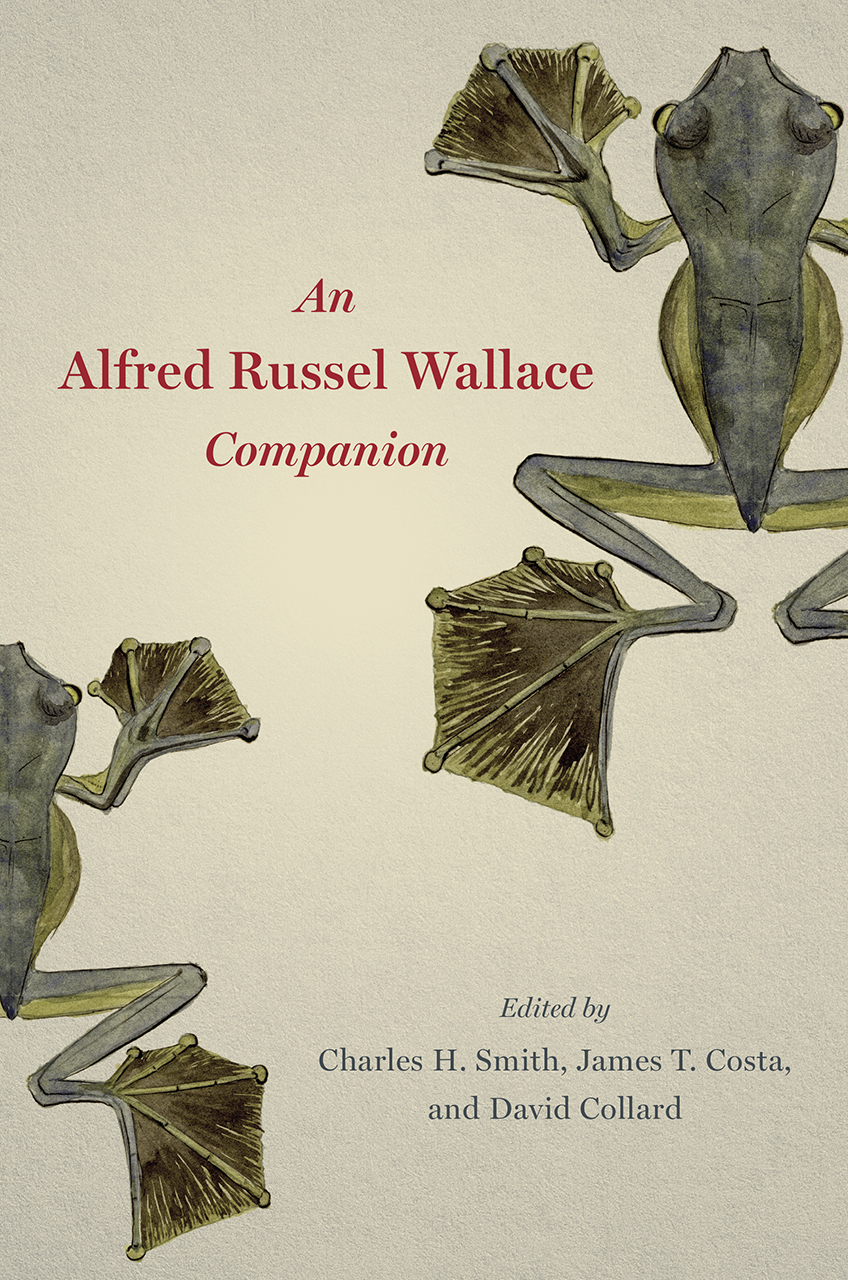
Charles H. Smith, James T. Costa, and David Collard, eds., An Alfred Russel Wallace Companion (Chicago: University of Chicago Press, 2019, 416 pp.) ~ I will be reviewing this book in the near future for Reports of the National Center for Science Education, so for now will simply share the publisher’s description: “Although Alfred Russel Wallace (1823–1913) was one of the most famous scientists in the world at the time of his death at the age of ninety, today he is known to many as a kind of ‘almost-Darwin,’ a secondary figure relegated to the footnotes of Darwin’s prodigious insights. But this diminution could hardly be less justified. Research into the life of this brilliant naturalist and social critic continues to produce new insights into his significance to history and his role in helping to shape modern thought. Wallace declared his eight years of exploration in southeast Asia to be ‘the central and controlling incident’ of his life. As 2019 marks one hundred and fifty years since the publication of The Malay Archipelago, Wallace’s canonical work chronicling his epic voyage, this collaborative book gathers an interdisciplinary array of writers to celebrate Wallace’s remarkable life and diverse scholarly accomplishments. Wallace left school at the age of fourteen and was largely self-taught, a voracious curiosity and appetite for learning sustaining him throughout his long life. After years as a surveyor and builder, in 1848 he left Britain to become a professional natural history collector in the Amazon, where he spent four years. Then, in 1854, he departed for the Malay Archipelago. It was on this voyage that he constructed a theory of natural selection similar to the one Charles Darwin was developing, and the two copublished papers on the subject in 1858, some sixteen months before the release of Darwin’s On the Origin of Species. But as the contributors to the Companion show, this much-discussed parallel evolution in thought was only one epoch in an extraordinary intellectual life. When Wallace returned to Britain in 1862, he commenced a career of writing on a huge range of subjects extending from evolutionary studies and biogeography to spiritualism and socialism. An Alfred Russel Wallace Companion provides something of a necessary reexamination of the full breadth of Wallace’s thought—an attempt to describe not only the history and present state of our understanding of his work, but also its implications for the future.” Order An Alfred Russel Wallace Companion: Publisher, Amazon, Powell’s, Barnes & Noble, Indiebound (see a review at Victorian Web).
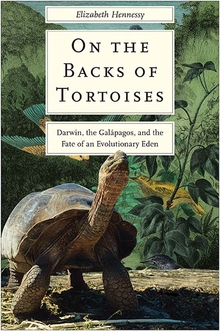
Elizabeth Hennessy, On the Backs of Tortoises: Darwin, the Galapagos, and the Fate of an Evolutionary Eden (New Haven: Yale UNiversity Press, 2019, 336 pp.) ~ Publisher’s description: “The Galápagos archipelago is often viewed as a last foothold of pristine nature. For sixty years, conservationists have worked to restore this evolutionary Eden after centuries of exploitation at the hands of pirates, whalers, and island settlers. This book tells the story of the islands’ namesakes—the giant tortoises—as coveted food sources, objects of natural history, and famous icons of conservation and tourism. By doing so, it brings into stark relief the paradoxical, and impossible, goal of conserving species by trying to restore a past state of prehistoric evolution. The tortoises, Elizabeth Hennessy demonstrates, are not prehistoric, but rather microcosms whose stories show how deeply human and nonhuman life are entangled. In a world where evolution is thoroughly shaped by global history, Hennessy puts forward a vision for conservation based on reckoning with the past, rather than trying to erase it.” Order On the Backs of Tortoises: Publisher, Amazon, Powell’s, Barnes & Noble, Indiebound (see a review from NPR).

Oren Harman and Michael R. Dietrich, eds., Dreamers, Visionaries, and Revolutionaries in the Life Sciences (Chicago: University of Chicago Press, 2018, 336 pp.) ~ This is the third in a series of books from the same editors providing short biographies of a wide variety of biologist and researchers in the life sciences: first with Rebels, Mavericks, and Heretics in Biology (2009) and then Outsider Scientists: Routes to Innovation in Biology (2013). I’ve particularly enjoyed the biographies of Ernst Haeckel by Robert J. Richards and Rachel Carson by Janet Browne. Here’s the publisher’s description: “What are the conditions that foster true novelty and allow visionaries to set their eyes on unknown horizons? What have been the challenges that have spawned new innovations, and how have they shaped modern biology? In Dreamers, Visionaries, and Revolutionaries in the Life Sciences, editors Oren Harman and Michael R. Dietrich explore these questions through the lives of eighteen exemplary biologists who had grand and often radical ideas that went far beyond the run-of-the-mill science of their peers. From the Frenchman Jean-Baptiste Lamarck, who coined the word “biology” in the early nineteenth century, to the American James Lovelock, for whom the Earth is a living, breathing organism, these dreamers innovated in ways that forced their contemporaries to reexamine comfortable truths. With this collection readers will follow Jane Goodall into the hidden world of apes in African jungles and Francis Crick as he attacks the problem of consciousness. Join Mary Lasker on her campaign to conquer cancer and follow geneticist George Church as he dreams of bringing back woolly mammoths and Neanderthals. In these lives and the many others featured in these pages, we discover visions that were sometimes fantastical, quixotic, and even threatening and destabilizing, but always a challenge to the status quo.” Order Dreamers, Visionaries, and Revolutionaries in the Life Sciences: Publisher, Amazon, Powell’s, Barnes & Noble, Indiebound (if you have access, here’s a review in the Journal of the History of Biology).

The Paleozoic, written and illustrated by Estrella Vega. This foldout presentation of prehistoric creatures is fantastic. Five books, one for each of the periods of the Paleozoic Era. Line them all up and it is 42 ft long! As Vega calls it, “Prehistory Unfolded.” For more information, visit estrellavega.com (or find each of the books here on Amazon). She has the Mesozoic Era is in the works…
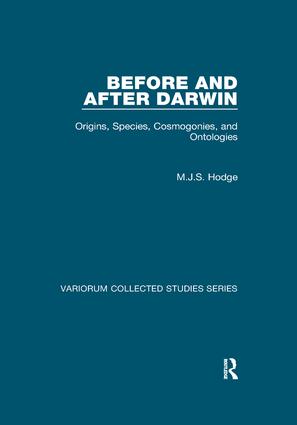
M. J. S. Hodge, Before and After Darwin: Origins, Species, Cosmogonies, and Ontologies (Routledge, 2019, 362 pp.) ~ This is the first volume a paperback (i.e., much cheaper) edition of a previously published two-volume collection of Darwin or evolutionary thought articles by historian of science Hodge. From the publisher: “This is the first of a pair of volumes by Jonathan Hodge, collecting all his most innovative, revisionist and influential papers on Charles Darwin and on the longer run of theories about origins and species from ancient times to the present. The focus in this volume is on the diversity of theories among such pre-Darwinian authors as Lamarck and Whewell, and on developments in the theory of natural selection since Darwin. Plato’s Timaeus, the Biblical Genesis and any current textbook of evolutionary biology are all, it may well seem, on this same enduring topic: origins and species. However, even among classical authors, there were fundamental disagreements: the ontology and cosmogony of the Greek atomists were deeply opposed to Plato’s; and, in the millennia since, the ontological and cosmogonical contexts for theories about origins and species have never settled into any unifying consensus. While the structure of Darwinian theory may be today broadly what it was in Darwin’s own argumentation, controversy continues over the old issues about order, chance, necessity and purpose in the living world and the wider universe as a whole. The historical and philosophical papers collected in this volume, and in the companion volume devoted to Darwin’s theorising, seek to clarify the major continuities and discontinuities in the long run of thinking about origins and species.” A paperback edition of the second volume – Darwin Studies: A Theorist and his Theories in their Context – is forthcming. Order Before and After Darwin: Origins, Species, Cosmogonies, and Ontologies: Publisher, Amazon, Powell’s, Barnes & Noble, Indiebound.
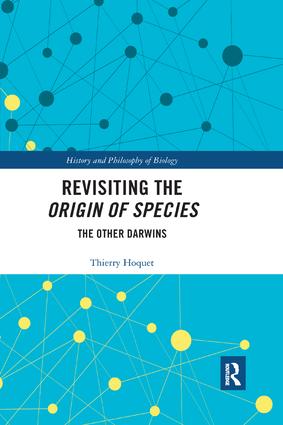
Thierry Hoquet, Revisiting the ‘Origin of Species’: The Other Darwins (New York: Routledge, 2018, 252 pp.) ~ From the publisher: “Contemporary interest in Darwin rises from a general ideal of what Darwin’s books ought to contain: a theory of transformation of species by natural selection. However, a reader opening Darwin’s masterpiece, On the Origin of Species, today may be struck by the fact that this ‘selectionist’ view does not deliver the key to many aspects of the book. Without contesting the importance of natural selection to Darwinism, much less supposing that a fully-formed “Darwinism” stepped out of Darwin’s head in 1859, this innovative volume aims to return to the text of the Origin itself. Revisiting the ‘Origin of Species’ focuses on Darwin as theorising on the origin of variations; showing that Darwin himself was never a pan-selectionist (in contrast to some of his followers) but was concerned with “other means of modification” (which makes him an evolutionary pluralist). Furthermore, in contrast to common textbook presentations of “Darwinism”, Hoquet stresses the fact that On the Origin of Species can lend itself to several contradictory interpretations. Thus, this volume identifies where rival interpretations have taken root; to unearth the ambiguities readers of Darwin have latched onto as they have produced a myriad of Darwinian legacies, each more or less faithful enough to the originator’s thought. Emphasising the historical features, complexities and intricacies of Darwin’s argument, Revisiting the ‘Origin of Species’ can be used by any lay readers opening Darwin’s On the Origin of Species. This volume will also appeal to students and researchers interested in areas such as Evolution, Natural Selection, Scientific Translations and Origins of Life.” Order Revisiting the Origin of Species: The Other Darwins: Publisher, Amazon, Powell’s, Barnes & Noble, Indiebound.

David Sloan Wilson, This View of Life: Completing the Darwinian Revolution (New York: Pantheon/Penguin, 2019, 304 pp.) ~ From the publisher: “It is widely understood that Charles Darwin’s theory of evolution completely revolutionized the study of biology. Yet, according to David Sloan Wilson, the Darwinian revolution won’t be truly complete until it is applied more broadly—to everything associated with the words “human,” “culture,” and “policy.” In a series of engaging and insightful examples—from the breeding of hens to the timing of cataract surgeries to the organization of an automobile plant—Wilson shows how an evolutionary worldview provides a practical tool kit for understanding not only genetic evolution but also the fast-paced changes that are having an impact on our world and ourselves. What emerges is an incredibly empowering argument: If we can become wise managers of evolutionary processes, we can solve the problems of our age at all scales—from the efficacy of our groups to our well-being as individuals to our stewardship of the planet Earth.” Order This View of Life: Completing the Darwinian Revolution: Publisher, Amazon, Powell’s, Barnes & Noble, Indiebound (read an excerpt here, and reviews at Nature, Psychology Today, Massive Science, Kirkus Reviews, and Publisher’s Weekly).
For more book ideas, see:
Darwin, evolution & science books for holiday gift giving (2018)
New graphic novels about Humboldt’s and Darwin’s travels
New book provides wide overview of the history of natural history
BOOK: Creatures of Cain: The Hunt for Human Nature in Cold War America
Also, my friends at The Well-Read Naturalist and The Friends of Charles Darwin always have recommendations and reviews for new nature books to check out.




